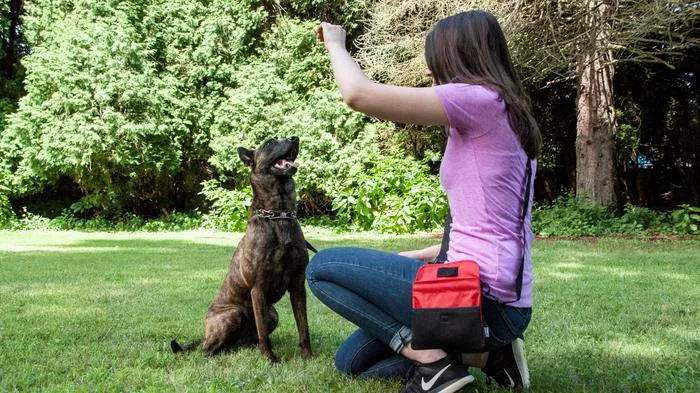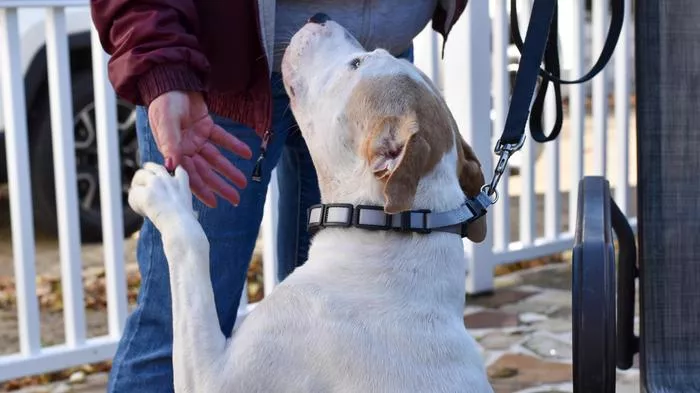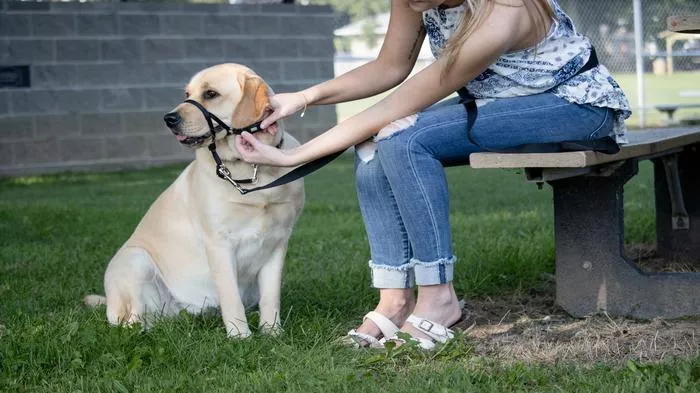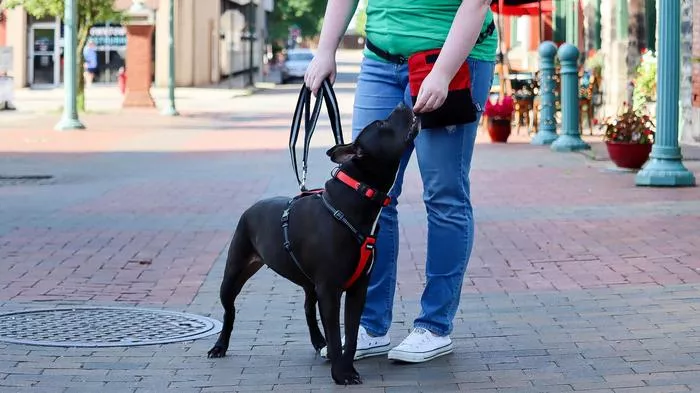Congratulations! You and your four-legged friend are following in the footsteps (and paw steps) of millions before you and are going to dog training class. As a professional dog trainer with over 4 decades of experience, here are some tips to help you and your dog get the most out of the experience.
First, before going to class, it's best to observe a class taught by the trainer you wish to hire. Since people learn differently, it's essential to determine if the trainer teaches in a fashion that works for you. Now, at this point, some people stop and ask themselves a question. Wait! Why does the trainer need to teach in a fashion that works for me? Isn't my dog getting trained? The answer is that dog training classes are more about training the owners, also known as pet parents. So, with that in mind, ask yourself if the trainer's explanations are understandable. Does the trainer have the kind of personality you will relate to and learn best from? The truth is that there are many highly talented dog trainers out there, and while they might be fabulous training dogs, some could be more proficient in teaching humans.

For many years, when my company was hiring dog trainers, we used to give them a test on this very item. I would ask the trainer to show me how they taught the stay command with one of the dogs we typically had in our care. Most professional dog trainers could show us how they went about teaching this behavior. Techniques varied, but in a minute or two, I could tell whether the trainer was decent and gauge their general experience level. The next part of the test was deceptively simple. We knew the trainer was good but were they excellent instructors? Could they teach others to do what they knew? To find out, I would ask the trainer to teach me how to teach the stay command to the same dog. Surprisingly, some trainers who were great at training the dog could have been better at teaching me to teach my dog.
Ideally you are looking for someone that is a good trainer AND a good instructor.
How can you tell? Watch them conduct their class. Can they demonstrate how a dog is taught to respond to a specific cue?
As importantly, can they effectively teach the people in their class to do the same? Do you like the general vibe and style? Do you think your dog will be comfortable and responsive to the trainer? If yes, you might have a winner.
Ok, so you found a trainer you are comfortable with, believe your dog will like and have enrolled in their class.
How can you maximize your experience and get the best results?
Here are a few tips.
1. Training requires patience and repetition. This is true when teaching new behaviors and even more so when modifying existing habits. The fact is that no dog is going to learn all the obedience cues typically taught in class just by going to class. The cues must be reinforced 5-6 days a week at home. Training takes time, which takes patience.
I also taught students to manage their expectations about how long it takes to modify behavior. I used jumping on people as an example. If your dog has been jumping on you since they were four months old and is now a year old, consider the number of times the dog has successfully jumped on you. Let's guestimate that your dog jumped on you 15 times a day, seven days a week, for the last eight months. That's 105 times a week and over 3,000 times in 8 months. Is it realistic that after jumping 3,000 times, you will completely modify this behavior after 30 minutes and 27 repetitions? It will take time. Manage your expectations and be ready to work with your dog for 4-6 months; you will be amazed at the results.

2. Many dogs won't do as well in class as when you work with them at home. The reason is that group classes can be very distracting for most dogs. All the people and other dogs in the class probably are much more distracting than your backyard. Some students are very diligent in working with their dogs at home and frustrated when they come to class to show off what their pets have learned, only to find the dog is not nearly as responsive. Once your dog has mastered cues at home with little or no distractions, you can start working them around gradually increasing distractions until you get decent responses regardless of what's happening. Until then, keep at it.
3. Follow safety protocols in class. This means keep 3-6 feet between your dog and others when in class unless the instructor says otherwise. You want this to be a positive experience for you and your pet. While most dogs in class will be friendly, not all will have the social experience or skill to conduct themselves appropriately. Some pets might be fearful, especially when put in a situation with multiple dogs; others might be aggressive for various reasons. Be mindful and cautious.

4. Invest in proper equipment. Make sure your leash is of the proper thickness and in good shape. Old, frayed leashes should be replaced. It's the same with the collar you use. Head collars or body harnesses should properly fit and be well maintained. We see this a lot with people using collars from older dogs on their puppies. While it's understandable to want to save money, and yes, your pup might grow into a larger collar, if it doesn't correctly fit them now, it's best to get one that does.
5. Speaking of proper equipment, if your dog is food-motivated, bring special treats to class. Treats will help your dog focus, which is essential with 3-7 other dogs in class.

6. Practice after graduation. This one is sometimes overlooked. Training is for life. Maybe not every day, but the more you practice, the stronger the behaviors will become. Plus, you might find that you and your dog enjoy the experience, which leads me to the last tip.
7. Make training fun. Dog training shouldn't be about marching up and down a field and barking commands. Nowhere is it written that dog training can't be fun for you and your dog. Keep lessons short, try to end on a positive note, and reward the behaviors you want to strengthen. The more you and your dog like training, the more often you will both want to do it, and the easier it will be to learn.
8. Some folks enjoy working with pets and the people who love them so much that they wonder if it’s possible to turn their passion into a full or part-time job. Still, others want to volunteer at shelters or rescues, helping pets find forever homes. If you want to take the next step toward a career working with and helping animals or desire more information about our various programs, please check out our website. All readers of this blog are eligible for a 10% discount on the tuition of any ABC program.
Steven Appelbaum is the president of Animal Behavior College (ABC). ABC is the nation’s largest pet vocational school, offering programs for animal lovers wishing to become dog trainers, cat trainers, service dog trainers, zookeeper assistants, pet groomers, veterinary assistants, aquatic maintenance professionals. For more information about ABC or Mr. Appelbaum go to www.animalbehaviorcollege.com

